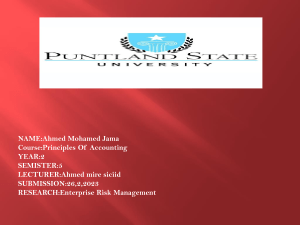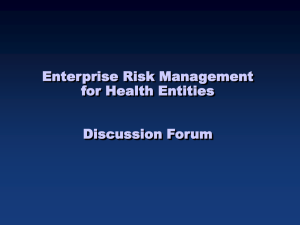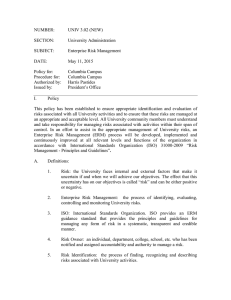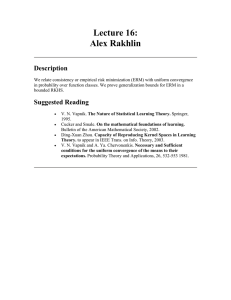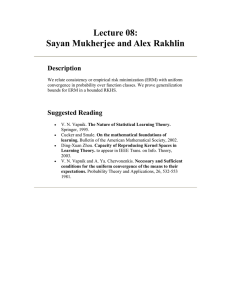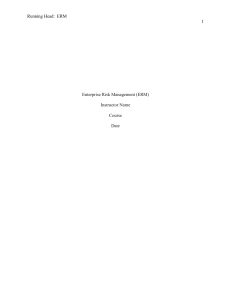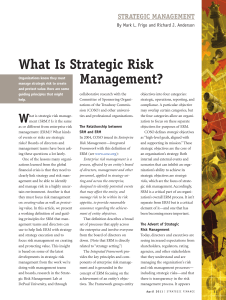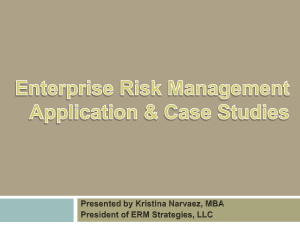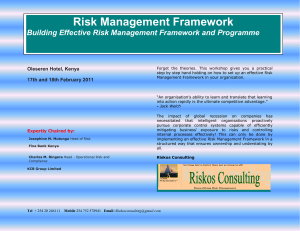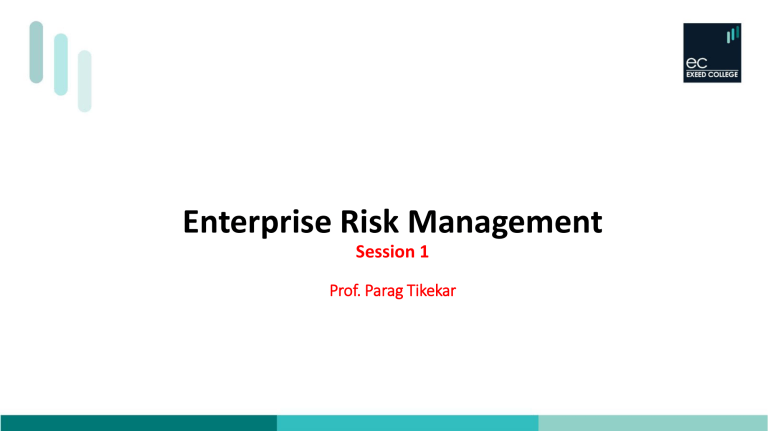
Enterprise Risk Management Session 1 Prof. Parag Tikekar Learning Outcomes TODAY’S OUTCOMES • Introduction to Risk Management • Activity – Risk Brainstorming • The traditional approach to Risk management • The traditional framework of Risk management • Why Risk and Health and Safety? • Introduction to Enterprise Risk Management • Introduction to the ERM framework • Introduction to ERM assignment INTRODUCTION TO RISK MANAGEMENT What is Risk Management ? Risk management can be defined as: The eradication or minimisation of the adverse affects of risks to which an organisation is exposed. ACTIVITY Going by this definition, lets quickly list all the Risks you are aware that your organisation is exposed to now THE TRADITIONAL APPROACH TO RISK MANAGEMENT There is a traditional approach to managing risk! There is a traditional framework for Risk Management! RISK MANAGEMENT RISK REDUCTION RISK ASSESSMENT Activity Characterisation Option Analysis Hazard Identification Monitoring Decision Making Risk Estimation RISK EVALUATION RISK ANALYSIS Implementation Audit or Review Hence Traditionally…… Risk assessment can be a ‘very straightforward process based on judgement requiring no specialist skills or complicated techniques.’ This approach is commonly known as qualitative or subjective risk assessment. WHY RISK AND HEALTH AND SAFETY? Lets have a look at the HSE regulation 3(1):• ‘Every Employer shall make a suitable and efficient assessment of:a) The risks to the health and safety of his employees to which they are exposed whilst they are at work. b) The risks to the health and safety of persons not in his employment arising out of or in connection with the conduct by him or his undertaking; • For the purpose of identifying the measures he needs to take to comply with the requirements and prohibitions imposed on him by or under the relevant statutory provisions.’ Its all about Hazard Identification! The potential to cause harm. Harm including ill health and injury, damage to property, plant, products or the environment, production losses or increased liabilities. Hence, Risk in H & S is the likelihood that a specified undesired event will occur due to the realisation of a hazard by, or during work activities or by the products and services created by work activities. ENTERPRISE RISK MANAGEMENT Today’s organizations are concerned about: • • • • Risk Management Governance Control Assurance (and Consulting) Why is ERM Important ? ERM supports value creation by enabling management to: • Deal effectively with potential future events that create uncertainty. • Respond in a manner that reduces the likelihood of downside outcomes and increases the upside. The ERM Framework ERM considers activities at all levels of the organization: o Enterprise-level o Division or subsidiary o Business units and processes The ERM Framework Enterprise risk management requires an entity to take a portfolio view of risk. The growing scope of Enterprise Risk management Introduction to ERM assignment Discussion and way forward….
